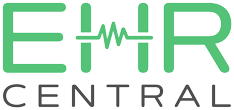Unlocking Efficiency - How Telehealth Streamlines Healthcare Delivery for Providers
In recent years, the healthcare landscape has witnessed a transformative shift towards telehealth, revolutionizing how healthcare services are delivered. Telehealth encompasses a range of technologies and services that facilitate remote healthcare delivery,

offering significant benefits for both healthcare providers and patients. In this blog post, we will explore how telehealth is unlocking efficiency in healthcare delivery specifically for providers.
1. Enhanced Access to Care
Telehealth eliminates geographical barriers, allowing healthcare providers to reach patients in remote or underserved areas. This enhanced access to care improves patient outcomes by ensuring timely interventions and follow-ups, reducing the burden of travel for patients, and enabling providers to serve a broader patient population.
2. Time and Cost Savings
One of the key advantages of telehealth is the significant time and cost savings it offers to healthcare providers. By conducting virtual consultations, providers can optimize their schedules, reduce wait times for patients, and minimize overhead costs associated with maintaining physical facilities. Additionally, telehealth can streamline administrative tasks such as appointment scheduling and documentation, allowing providers to focus more on patient care.
3. Improved Care Coordination
Telehealth facilitates seamless communication and collaboration among healthcare teams, leading to improved care coordination. Providers can easily consult specialists, share patient information securely, and coordinate follow-up care plans, resulting in better continuity of care and reduced medical errors.
4. Remote Monitoring and Chronic Disease Management
Telehealth technologies enable remote monitoring of patients with chronic conditions, allowing providers to track vital signs, medication adherence, and overall health status in real-time. This proactive approach to healthcare management not only improves patient outcomes but also reduces hospital readmissions and emergency room visits, leading to cost savings for healthcare systems.
How EHRCentral enhances your healthcare practice?
5. Patient Engagement and Satisfaction
Offering telehealth services enhances patient engagement by providing convenient access to healthcare services from the comfort of their homes. Patients appreciate the flexibility, reduced wait times, and the ability to consult with their providers without travel constraints. Higher patient satisfaction ultimately translates to better patient retention and positive word-of-mouth referrals for providers.
6. Regulatory and Reimbursement Support
The regulatory landscape for telehealth has evolved to support its widespread adoption, with many insurance providers now offering reimbursement for telehealth services. Providers can leverage these reimbursement opportunities while adhering to regulatory requirements, ensuring financial sustainability and growth opportunities for their practices.
Conclusion
Telehealth is a game-changer in healthcare delivery, offering numerous benefits for providers seeking to enhance efficiency, improve patient outcomes, and stay competitive in a rapidly evolving industry. By embracing telehealth technologies and integrating them into their practice workflows, providers can unlock new growth opportunities, reach more patients, and cost-effectively deliver high-quality care.
References:
- American Telemedicine Association. (2022). Telehealth Basics.
- Center for Connected Health Policy. (2022). State Telehealth Laws & Reimbursement Policies.
- Lee, T. T. (2021). Telehealth in Practice: Using Technology to Deliver Value-Based Care.
This blog post provides a comprehensive overview of how telehealth streamlines healthcare delivery for providers, highlighting its benefits and potential impact on the healthcare industry. Incorporating relevant statistics, case studies, and expert insights can further enrich the content and provide actionable takeaways for readers interested in adopting telehealth strategies in their practices.





